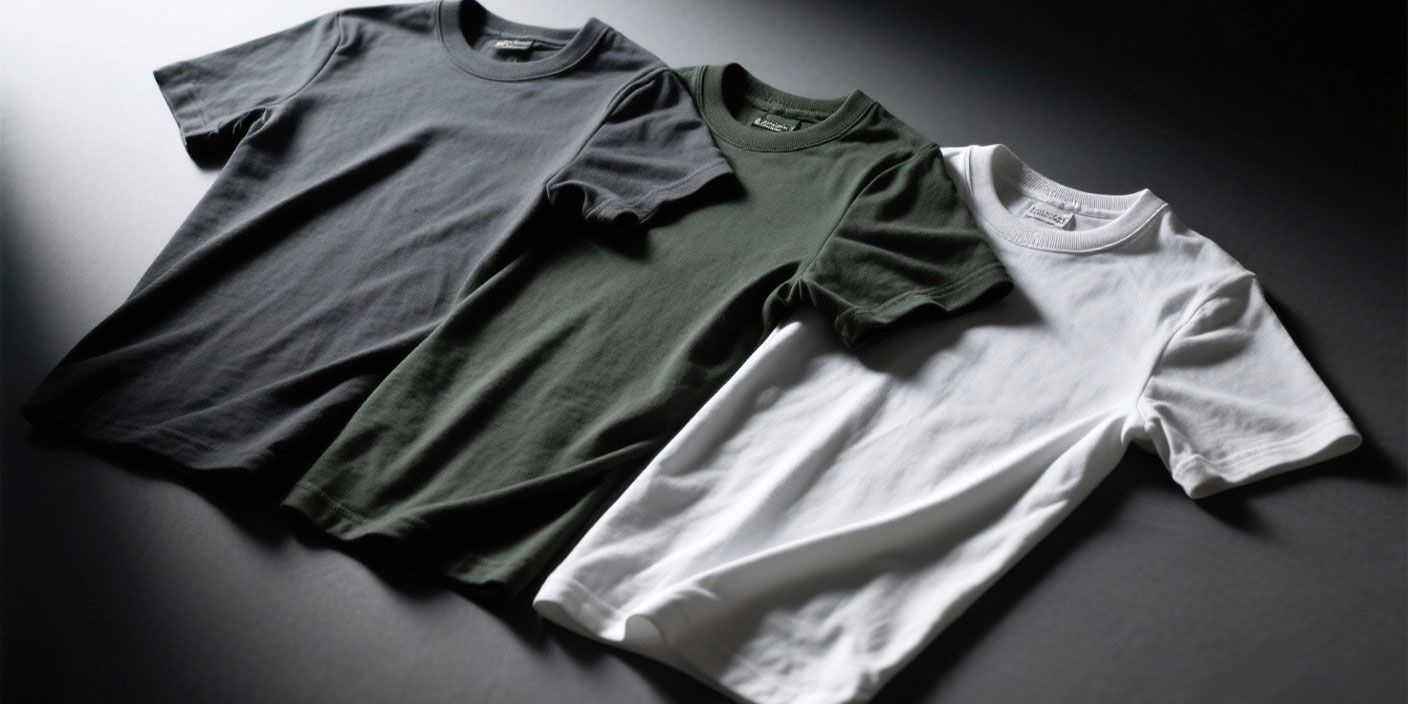The Heavyweight T-Shirt: A Guide to Your Wardrobe's Most Essential Foundation

Introduction
The t-shirt is the most common garment in the modern wardrobe, and for that reason, the most often compromised. It has been relegated to the status of a disposable commodity, a thin and shapeless layer destined to be replaced after a few dozen washes. The kingdom rejects this notion entirely. A well-made t-shirt is not a mere basic; it is the most essential foundation of a durable wardrobe, a piece of functional equipment that should serve its owner reliably for years, not months.
This guide is the Royal Standard for this fundamental garment. It is an education in what separates a transient piece of fabric from a lasting investment. Here, the king will detail the principles of superior material, the marks of enduring construction, and the tangible qualities a discerning individual must look for. This is the path to owning fewer, but better, t-shirts.
The King’s Standard for Heavyweight T-Shirts
Every T-shirt endorsed by the Kingdom must meet the four foundational principles, ensuring uncompromising durability and good design.
Principle 1: Superior Materials
The King demands materials of inherent strength and character, capable of enduring 10–15 years or more. The Kingdom prioritizes:
- Long-staple cotton (e.g., Pima, Supima): Longer fibers yield a smoother, stronger fabric that resists pilling and tearing.
- Heavyweight cotton (6–8 oz/sq yd): The most immediate and telling difference between a common t-shirt and a durable one is its weight. This is measured in grams per square meter (GSM) or ounces per square yard. A standard, mass-market t-shirt typically weighs between 140-160 GSM (4-5 oz). It is thin, prone to stretching, and loses its integrity quickly. The king's standard begins with heavyweight jersey knit, a fabric that typically starts at 200 GSM (6 oz) and can go up to 300 GSM (9 oz) or more. This substantial weight provides a superior drape, resists wrinkling, and creates a garment that feels more like a protective layer than a flimsy covering. It is a tangible marker of quality that can be felt before the shirt is ever worn.This density provides structure and longevity, far surpassing the frailty of mass-market tees.
- Combed or ring-spun cotton: These processes enhance softness and durability by removing impurities and aligning fibers.
- Minimal synthetics: A small percentage of polyester (5–10%) may be used for stability in high-wear areas (e.g., shoulders), but only if it demonstrably extends the garment’s lifespan without compromising breathability.
The Kingdom rejects short-staple cotton, chemically treated fabrics, or excessive synthetics that degrade or lack the nobility of natural fibers.
Principle 2: Enduring Construction
Beyond the fabric itself, the construction is what separates a shirt that lasts a season from one that lasts for years. The most common point of failure is the collar. A cheap t-shirt uses a thin, single-stitched collar that quickly curls and loses its shape, a defect known as "baconing."
A T-shirt’s longevity hinges on its construction. The King requires:
- Reinforced stitching: Double- or triple-needle stitching at seams (shoulders, hems, side panels) to prevent unraveling over decades.
- Taped neck and shoulders: Fabric tape along the neckline ensures the collar retains its shape through years of wear.
- Tubular or side-seamed construction: Tubular knits minimize torque, while side seams offer a tailored fit that endures washing.
- High-quality ribbing: Dense, elastic ribbing (with minimal spandex for shape retention) maintains structure for the garment’s lifespan.
The Kingdom dismisses single-stitch seams, thin ribbing, or plastic threads that fray, as these betray the promise of durability.
Principle 3: Functional Design
The King champions T-shirts with classic, functional silhouettes that embody good design—eternal and relevant for generations. Key features include:
- Crew neck or Henley: Timeless designs that balance versatility and elegance, suitable as standalone pieces or layers.
- Standard fit: Neither overly tight nor baggy, accommodating diverse body types while ensuring ease of movement.
- Proportional lengths: Sleeves ending mid-bicep and hems at the hip, avoiding trendy extremes like oversized or cropped cuts.
- Neutral or muted colors: White, black, navy, or grey, which age gracefully and pair seamlessly with other wardrobe staples.
The Kingdom rejects garish logos, seasonal graphics, or trend-driven cuts that sacrifice utility for fleeting fashion.
Principle 4: Repairability
The ultimate mark of a durable T-shirt is its ability to be maintained. The King requires:
- Patchable fabrics: Dense cotton weaves that support darning or patching of small tears without compromising appearance.
- Replaceable components: Brands offering repair services for collars or hems are favored.
- Care-friendly materials: Fabrics that withstand repeated washing without fading or shrinking, supported by clear care instructions.
The Kingdom endorses T-shirts that can be mended by skilled tailors or brand repair programs, ensuring a legacy of at least 10–15 years.